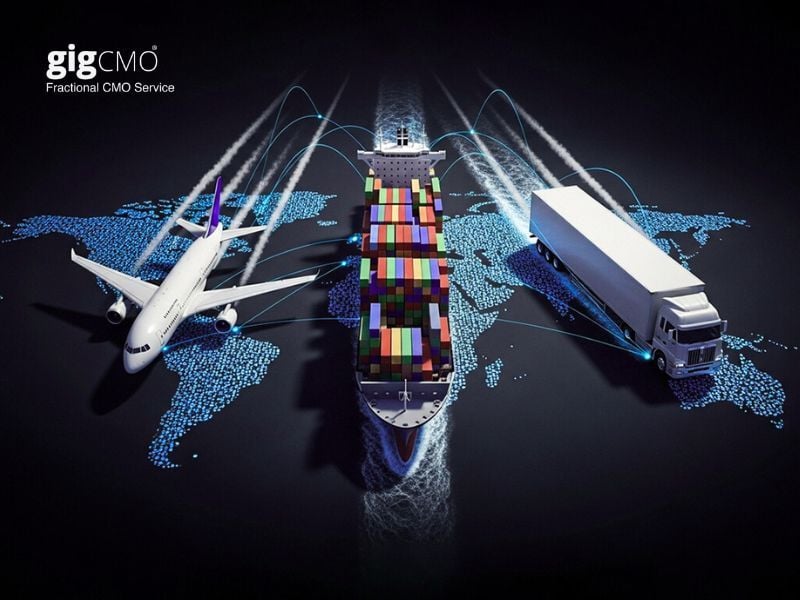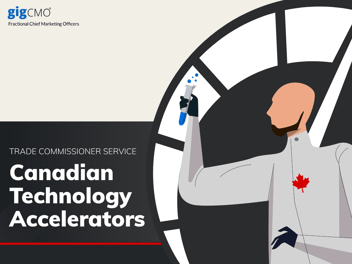
As International Trade Week 2025 (3–7 November) approaches, the Department for Business and Trade (DBT) is urging UK businesses to explore new markets and strengthen their export performance. Yet, amid trade reforms and geopolitical uncertainty, one issue continues to shape competitiveness more than any other: tariffs.
According to the World Trade Organisation (WTO), the full impact of the tariffs is expected to be felt in 2026. Understanding how tariffs work is essential for any business, and gigCMO will help you navigate tariff complexity and build market resilience.
What Is the Meaning of Tariffs in International Trade?
In international trade, tariffs are taxes or duties placed on imported goods and services. Their main purpose is to make imported products more expensive than those produced locally, a way for governments to protect domestic industries and manage trade relationships.
President Trump’s unpredictable trade policies pose significant risk to global trade and the economy. As of 2025, there have been a number of reciprocal tariffs introduced that vary significantly, ranging from 10% and are imposed on a range of products, including steel, aluminium, and various customer goods. The situation is constantly evolving, with ongoing negotiations and potential changes that could further influence trade dynamics.
What Are the Different Types of Tariffs?
For businesses engaged in global trade, understanding the type of tariff applied to your products is essential to managing landed costs, pricing strategies, and profit margins.
Tariffs come in several forms, and each one affects your operations differently, from sourcing raw materials to exporting finished goods. Understanding these dynamics is the first step in designing a pricing and market strategy that works internationally.
1. Specific Tariffs
A specific tariff is a fixed charge applied per unit, weight, or volume of an imported product, regardless of its total value. Specific tariffs make costs predictable for importers but can disproportionately affect lower-value goods.
2. Ad Valorem Tariffs
Ad valorem tariffs (Latin for "according to value") are calculated as a percentage of the product's declared value. For B2B firms, this type of tariff directly impacts total shipment costs and profit margins, especially when importing high-value equipment or components.
3. Compound Tariffs
A compound tariff combines both specific and ad valorem components, applying a fixed fee per unit plus a percentage of its value. This approach gives governments stable revenue while providing extra protection against price fluctuations in critical sectors like engineering, construction, and manufacturing.
4. Tariff-Rate Quotas (TRQs)
A tariff-rate quota blends tariffs and quotas to manage both the quantity and cost of imports. A limited amount of goods can enter at a lower tariff, with higher duties applied once that quota is exceeded. For manufacturers and suppliers, TRQs are particularly relevant when managing high-volume imports such as raw materials, metals, or agri-industrial inputs.
How Tariffs Affect Prices and Market Behaviour
When tariffs are introduced, they increase the overall price of imported goods. This causes three key effects:
- Customers buy less as goods become more expensive.
- Domestic producers ramp up output to fill the gap.
- Import volumes decline, reshaping trade flows.
For example, UK manufacturers dependent on imported steel or electronics may face higher production costs when tariffs are applied, which can lead to higher retail prices downstream. That's why understanding tariff exposure is a vital part of export strategy, especially for businesses looking to scale globally.
You can check current UK tariff schedules and duty rates via the UK Integrated Online Tariff Tool provided by DBT.
Six Critical Questions for CEOs Navigating a Disrupted Market
While tariffs create challenges, they also prompt critical strategic conversations inside boardrooms. The leaders who navigate this period successfully are those asking the right questions about exposure, readiness, and growth when the rules of the game change.
1. How exposed are we and where?
The first step is clarity. Many businesses underestimate how tariffs flow through their supply chain. Even if your product isn't directly taxed, your suppliers' costs might be.
Start by mapping where your inputs, components, and customers sit geographically. Are you relying heavily on one route or one region? Once you can see the risk, you can start to manage it.
Companies that quickly identify their exposure and diversify suppliers or logistics partners often stabilise faster and protect profit margins more effectively.
2. Should we diversify into new markets?
Tariffs rarely affect all regions equally. If one market is tightening, another is often opening up. For international businesses, this is where the UK remain strong strategic options.
Both markets offer trade stability, transparent regulation, and advanced infrastructure, supported by initiatives from the Department for Business and Trade (DBT). Whether you're a manufacturer in Canada or a service firm in Asia, expanding to the UK can help balance global risk and open access to customers across Europe.
Diversification isn't just about escaping volatility; it's about positioning your business in growth-oriented markets where trade support and demand are strong.
3. Is our value proposition strong enough for international competition?
When trade costs rise, customers start looking harder at what they're paying for. That's when your value proposition becomes the most important asset you have.
If your brand, product, or service can't clearly answer "Why us?" in a new market, competitors will. Now is the time to refine your message to make sure it speaks to local priorities, regulations, and buying behaviours.
The businesses that win internationally are those that translate their value, not just transport their products.
4. Do we have the right capabilities to adapt?
Trade volatility isn't just a supply chain issue; it's a leadership one. Teams need the skills, data, and structure to respond quickly when change hits.
Ask yourself: do we have the internal know-how to navigate new trade rules, manage technology shifts, or redesign our pricing structure? If not, external expertise, like Fractional CMO Service, can help you close those gaps without overextending your team.
Agility starts with capability. The faster your organisation can turn information into action, the stronger your position becomes.
5. Are we using data and AI to stay ahead?
With so many variables, tariffs, freight rates, and exchange rates, no one can make confident decisions in their marketing based on instinct alone.
That's where marketing technology (MarTech) tools come in. They help you monitor competitors and forecast opportunities, with greater accuracy and efficiency.
Even small and medium-sized enterprises can now access these tools at an affordable rate. The result? Faster decisions, smarter strategy, and fewer surprises. AI isn't replacing leadership; it's giving leaders the insight to make better calls.
6. Are we reacting to disruption or preparing to lead?
Every CEO faces a choice: wait for stability, or build resilience now.
Those who treat tariffs as temporary often end up reacting again later. Those who treat them as a sign to strengthen operations, brand, and market reach build long-term growth.
Resilience looks different for every business. It may involve expanding into a new region, such as the UK, investing in technology, or revisiting your pricing strategy. However, in every case, it begins with asking the right questions and taking action before the next change arrives.
The gigCMO Perspective
At gigCMO, we work with business leaders across sectors who are rethinking their strategies for global trade. Through our playbook-driven approach, we help CEOs clarify their value proposition, assess market readiness, and adapt their commercial strategy for long-term resilience.
Take the Market Readiness Assessment to benchmark your global potential and uncover your next opportunity in a new market.




